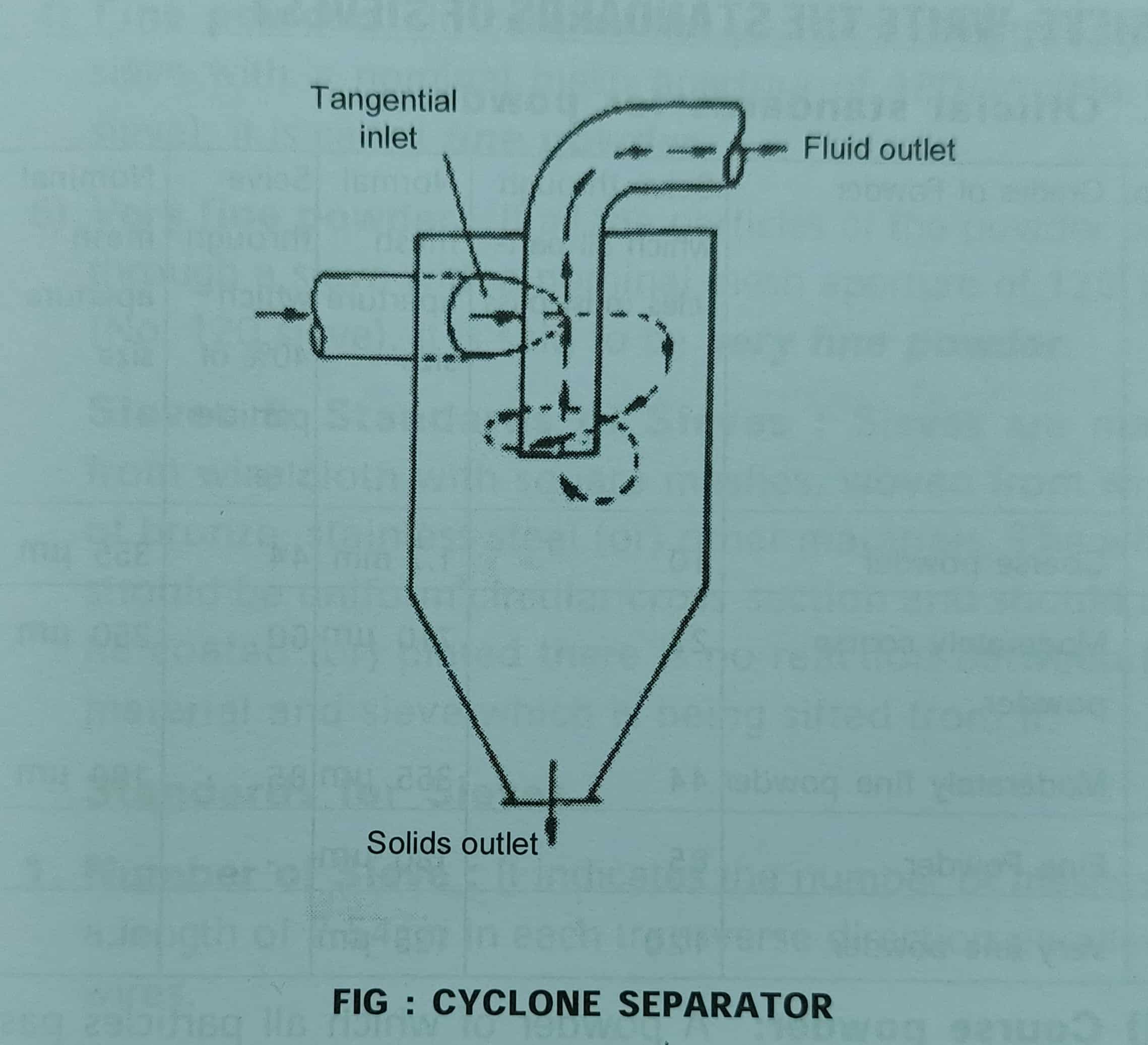Table of Contents
Principle of cyclone separator
In a cyclone separator, the centrifugal force is used to separate solids from fluids. The separation depends not only on the particle size but also on the density of particles. Hence depending on the fluid velocity, the cyclone separator can be used to separate all types of particles or to remove only coarse particles and allow fine particles to be carried through with the fluid.
Construction of cyclone separator
It consists of a cylindrical vessel with a conical base. The upper part of the vessel is fitted with a tangential inlet and a fluid outlet and at the base, it is fitted with a solid outlet.
Working:
The suspension of a solid in gas (usually. air) is introduced tangentially at a very high velocity so that rotary movement takes place within the vessel. The fluid is removed from a central outlet at the top. The rotary flow within the cyclone separators causes the particles to be acted on by a centrifugal force. The solids are thrown out to the walls, thereafter it falls to the conical base, and are discharged out through the solids outlet.
Uses
Cyclone separators are used to separate the suspension of a solid in a gas (air). It can be used with liquid suspensions of solids.
Also read: What are sweetening agents in pharmaceutical
